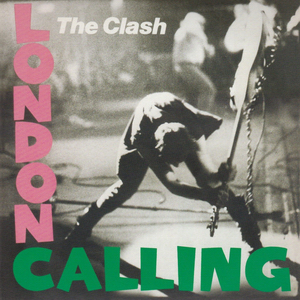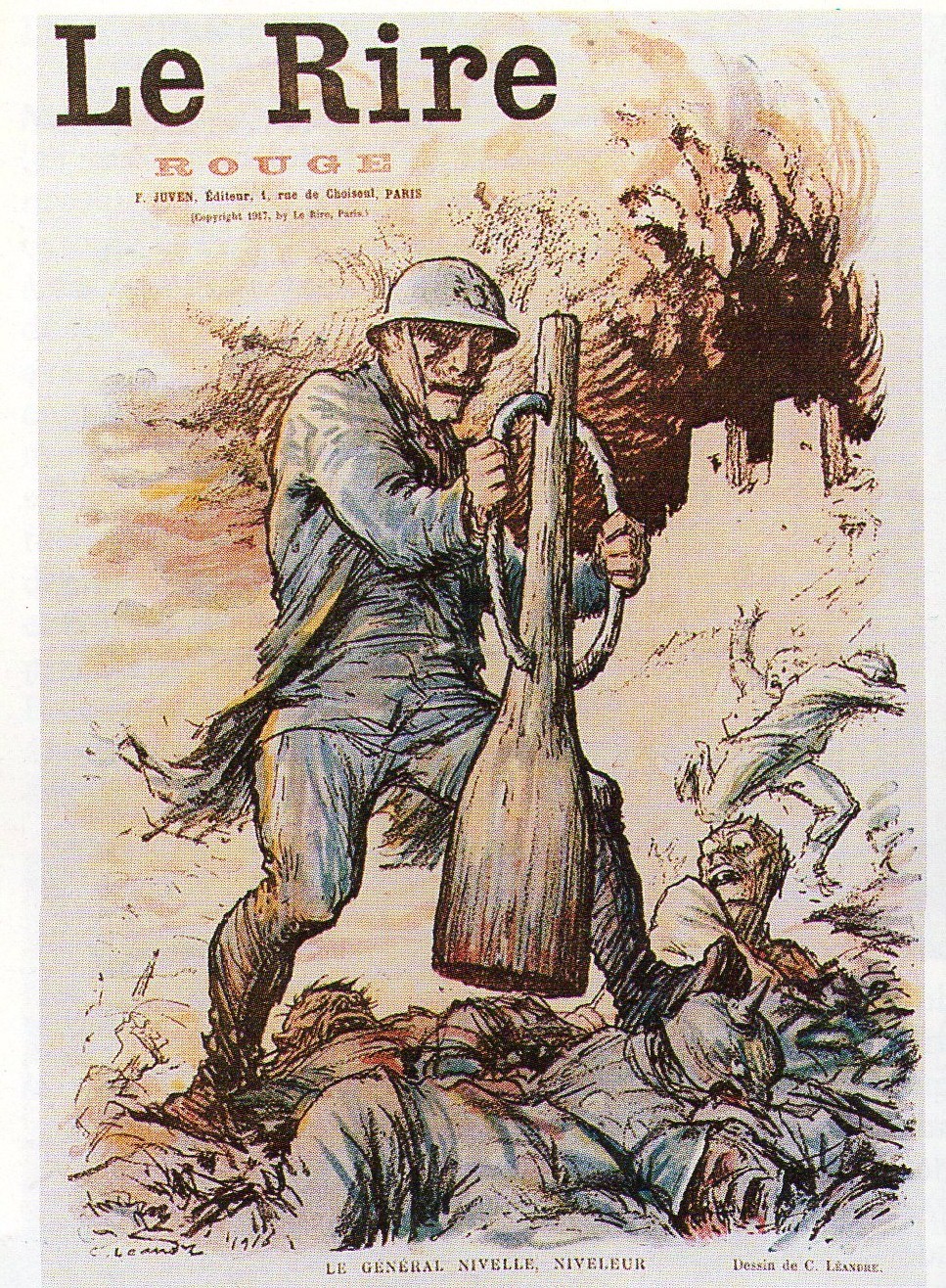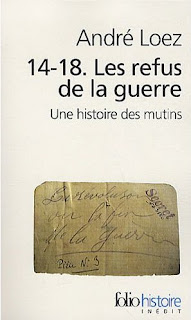
From "The Clash" to "Combat Rock": music as a vehicle of rebellion.
The Clash is a British band consisting of Joe Strummer (guitar, vocals), Paul Simonon (bass), Mick Jones (guitar and vocals) Topper Headon (drums, he joined the group From the 2nd album) formed in 1976. Two of its members, Mick Jones and Paul Simmonon, were born in Brixton, the latter is the composer of the song "Guns of Brixton" he plays well.
The Clash became known as an opening act for the Sex Pistols on a tour called "Anarchy Tour" which allowed them to sign with CBS for their first single "White Riot" in 1977 and first album, entitled "The Clash". They rotate with the major groups of the late 70's: The Jam, Paul Weller, group emblematic revival mods (1) but Buzzcocks, spearhead of the Mancunian punk scene. In 1978 they released their second album Give'em Enough Rope s'egagent and increasingly involved in political activism, for example, the concert "Rock Against the racism" Victoria Park, April 78, at the initiative of the Anti-Nazi League.
Then, in December 1979, The Clash released a double album to mark the definitive history of rock: London Calling . Always associated with the punk movement, yet the group follows a route very different from that taken by Johnny Rotten and Sid Vicious. Indeed, the Clash are more rock oriented but able to enrich the sound of ska, reggae, dub, etc.., What they are doing great on this double album. The cover inspired that of the first LP of Elvis Presley, dating from 1956, is now part of the picture book rock. It shows Paul Simonon destroyed in a furious gesture his guitar gesture that sums up both the energy of the group but also the revolt that irrigates his discography.
It closes in 1982 (the album's release Cut The Crap published 3 years later, the group no longer includes or Topper Headon, Mick Jones nor). In the end, the Clash leaves five albums, including a double ( London Calling) and triple ( Sandinista we talked Blot), and a multitude of titles witnessed their commitment to the image of him their last production entitled "Combat Rock" .
"Guns of Brixton" a song visionary.
England, 1978 the crisis is installed since the beginning of the decade. Oil crisis, which plunged the country deindustrialization blacks the first industrial revolution in the doldrums, a million unemployed and inflation rising to 18%. The general election are, as often placed under the banner of bipartisanship and are just a confrontation between the Labour Party and the Tories. At the head of the training of curators, Margaret Thatcher , which some say could be the first woman Prime Minister of the United Kingdom after the elections of May 79 that approach.
During the campaign, the issue of immigration burst into the debates. For Thatcher, recover the voices of supporters of the National Front is an option not to be overlooked. The country then 54 million inhabitants, 1.9 million of qualified people "colored" . The spearhead (no pun) of the Tory party, gave a series of sentences in the press which raise some doubts about its positioning and its attempts to recover his voice right, so it will stop listing to immigration ( "clear end to immigration" ) then open to family reunification, and adds "people are really afraid Rather That This Country Might Be swamped by people of a different culture." ("People are quite disturbed to see this country swamped by people from another culture ").
Although born eclectic personalities as Harold Macmillan (2) John Major (3) or David Bowie, the district of Brixton located das Borough of Lambeth in south-west London, is nevertheless strongly influenced by his Jamaican and Caribbean identity (or "West Indies" which also includes Trinidad and Tobago or Barbados) . A resident of Brixton on 3 comes from this region of the world (up to 70% in parts of the sector) so much so that the neighborhood was nicknamed Harlem London. According to studies conducted in the 80 (4) is a suburb marked by heavy housing problems (lots of squats, a long waiting list for public housing), a rampant crime linked to a drug trafficking important, with a decaying social fabric because of the important parenthood and unemployment . Even if all the possible numbers are after the 70 (5) they speak volumes: in 1985, 13% of the UK workforce is unemployed, the rate is 23% among minorities may culminate among young blacks at 55% to 67% even for locals.
relations with the police are difficult in the neighborhood for several years lorqui Paul Simonon wrote "Guns of Brixton." On the one hand, people criticized the Metropolitan Police's lack of enthusiasm to solve the cases in which immigrants are victims of the neighborhood. Thus, the disappearance of two young boys in the black community in a burning building remains unresolved. On the other hand, the population complains of harassment the MPS (Metropolitan Police Service) which has the possibility to carry out checks on mere suspicion. These are experienced by the population as controls facies, often unjustified and branding, making the atmosphere more irrespirrable. It is on this theme that Paul Simonon built its title as one can read and listen below:
When The law break in
The money feels good
You Can crush us
relations with the police are difficult in the neighborhood for several years lorqui Paul Simonon wrote "Guns of Brixton." On the one hand, people criticized the Metropolitan Police's lack of enthusiasm to solve the cases in which immigrants are victims of the neighborhood. Thus, the disappearance of two young boys in the black community in a burning building remains unresolved. On the other hand, the population complains of harassment the MPS (Metropolitan Police Service) which has the possibility to carry out checks on mere suspicion. These are experienced by the population as controls facies, often unjustified and branding, making the atmosphere more irrespirrable. It is on this theme that Paul Simonon built its title as one can read and listen below:
When They kick out your front door
When they will smash your door
How you gonna come?
How will you respond?
With your hands on your head
putting your hands on your head
Gold On The trigger of your gun
Or your finger on the trigger?
Or your finger on the trigger?
When The law break in
When police disembark
How you gonna go?
How do you end up?
How you gonna go?
How do you end up?
Shot Down on the pavement
Shot dead on the pavement Or waiting in Death row
Or waiting in death row
You Can crush us
You can crush us
Shot dead on the pavement Or waiting in Death row
Or waiting in death row
You Can crush us
You can crush us
You Can bruise us
you can beat us
Goal you'll Have to answer to
but you'll have to answer for
Oh, Guns of Brixton
Oh, the guns of Brixton
you can beat us
Goal you'll Have to answer to
but you'll have to answer for
Oh, Guns of Brixton
Oh, the guns of Brixton
The money feels good
You have enough money
And your life you like it well
and you love your life
Surely your aim Time Will Come
but soon your time will come
As in heaven, in hell did
Both in heaven, in hell
You see, he feels like Ivan
And your life you like it well
and you love your life
Surely your aim Time Will Come
but soon your time will come
As in heaven, in hell did
Both in heaven, in hell
You see, he feels like Ivan
You see, it felt like Ivan
BORN "under the Brixton Sun
Born under the Brixton sun
His Game Is Called survivin '
His game is called survival
At The End Of The Harder They Come
At the end the harder fall
You know, it means no mercy
BORN "under the Brixton Sun
Born under the Brixton sun
His Game Is Called survivin '
His game is called survival
At The End Of The Harder They Come
At the end the harder fall
You know, it means no mercy
You know it means no mercy
Theys HIM caught with a gun
They caught with a gun
No need for the Black Maria
No need for black van (6)
Goodbye To The Brixton sun
Goodbye sun Brixton
You Can crush us
Theys HIM caught with a gun
They caught with a gun
No need for the Black Maria
No need for black van (6)
Goodbye To The Brixton sun
Goodbye sun Brixton
You Can crush us
You can crush us
You Can bruise us
You Can bruise us
You can hit us
Goal you'll Have to answer to
Goal you'll Have to answer to
But you have to answer for
Oh-The Guns of Brixton
Oh-The Guns of Brixton
Oh-the guns of Brixton.
When They kick out your front door
When They kick out your front door
When they stone ya your door
How you gonna come?
How you gonna come?
How do you react?
With your hands on your head
With your hands on your head
By placing hands on head
Or On The trigger of your gun
Or On The trigger of your gun
Or your finger on the trigger
You Can crush us
You can crush us
You Can bruise us
You Can bruise us
You can hit
shoot & Events us
And even kill us
Goal oh-the guns of Brixton
Goal oh-the guns of Brixton
But Oh-The Guns of Brixton
Shot Down on the pavement
Shot Down on the pavement
Shot on the sidewalk
Waiting in death row
Waiting in death row
In the death row
His game WAS survivin '
His game was survive
As in heaven as in hell
As in heaven as in hell
Both in hell that 'paradise.
You Can crush us
You Can crush us
You can crush us
You Can bruise us
You Can bruise us
You can hit us
Goal you'll Have to answer to
Goal you'll Have to answer to
But you must respond
Oh, The Guns of Brixton
Oh, The Guns of Brixton
Oh, the guns of Brixton
Oh, The Guns of Brixton
Oh, The Guns of Brixton
Oh, the guns of Brixton
Oh, The Guns of Brixton
Oh , guns Brixton
Oh, The Guns of Brixton
Oh, guns Brixton
" Guns of Brixton": the art of being clairvoyant in fertile ground for the riot.
Top April 1981, which describes Paul Simonon becomes a terrible reality. The temperature rises dangerously near Jamaica in London. The police are ever present, she engages in a systematic and very aggressive population of the suburb as part of Operation called "Swamp 1981" . 50% of people are controlled by the community of the West Indies, and 2 / 3 of them are under 21 years. (6)
the night of April 10 , a young man was wounded in stabbing . Two police officers approached him, the crowd around, wrongly or rightly, sees a new sign of assaulting a local resident. It accumulates rapidly and the situation degenerates. The petrol bombs rained down, the scenes of riots and clashes with police multiply. The neighborhood is in flames, especially the area known as the "frontline" on Raintail road. Many buildings were burned including a school, shops, pubs, some of which are known to reserve the worst home to people of color.
The results are overwhelming: 360 wounded, 83 premises are destroyed by fire, a hundred vehicles, half of which belonging the police, are damaged or burnt. 82 people were arrested. Damage totaled 7.5 million pounds .
Margaret Thatcher did not conclude that these riots are less justified. However, Lord Scarman is appointed to a report that bears his name and will be published in 1985 . Its conclusions are not all made in the same direction. He recognizes clearly that there is real discrimination, not legal, but real and felt by the colored population of the district who finds himself at a disadvantage. It then recommends policy of positive discrimination from including the hiring of people from Caribbean communities in the police force. Following the Scarman report, it should also be noted that the Vagrancy Act which made possible the arrest and abusive controls the police on suspicion falls.
That same year, new riots broke out in England in Brixton, in Toxteth (Liverpool) or the Clash Peckham but are no longer there to anticipate or sing.
And today?
Brixton is like Harlem, a neighborhood undergoing revitalization . He kept his colorful and cosmopolitan character and became famous for both its market daily for its vibrant cultural scene around the Brixton Academy . As often, the renovation of the district accompanied by gentrification of its population.
Notes:
(1) The group is anchored in both the punk rock movement and that of mods was embodied by the Who.
(2) - (3) British Conservative Prime Ministers respectively from 1957 to 1953 and from 1990 to 1997.
(4) The figures are taken from Lord Scarman's report published in 1985.
(5) The figures are derived from the report by Lord Scarman published in 1985.
(6) The black police vans, the equivalent of our "salad bowl", are nicknamed the Black Maria in the vernacular.
(7) Jean-Claude Monet " Fonts and urban violence: law and disorder in urban Anglo-Saxon " .
That same year, new riots broke out in England in Brixton, in Toxteth (Liverpool) or the Clash Peckham but are no longer there to anticipate or sing.
And today?
Brixton is like Harlem, a neighborhood undergoing revitalization . He kept his colorful and cosmopolitan character and became famous for both its market daily for its vibrant cultural scene around the Brixton Academy . As often, the renovation of the district accompanied by gentrification of its population.
 |
| [Brixton, Electric Avenue, the market in 2011. V. photo Servat] |
 |
| [Brixton Market, between shops and eateries bios, maintaining African identity carabéenne in the neighborhood. Photo V. servat] |
Notes:
(1) The group is anchored in both the punk rock movement and that of mods was embodied by the Who.
(2) - (3) British Conservative Prime Ministers respectively from 1957 to 1953 and from 1990 to 1997.
(4) The figures are taken from Lord Scarman's report published in 1985.
(5) The figures are derived from the report by Lord Scarman published in 1985.
(6) The black police vans, the equivalent of our "salad bowl", are nicknamed the Black Maria in the vernacular.
(7) Jean-Claude Monet " Fonts and urban violence: law and disorder in urban Anglo-Saxon " .
bibliographic slopes:
Headliners:
Time magazine article:
- http://www.time.com/time/magazine/article/0, 9171,924708,00 . html # ixzz17GLrII8f http://www.time.com/time/magazine/article/0, 9171,948011,00. html # ixzz17GMzmFJ1
- http:/ / www.time.com/time/magazine/article/0, 9171,924708,00. html # ixzz17GLcAOLp
- http://www.time.com/time/magazine/article/0 , 9171,948011,00. html # ixzz17GMpO0rD
Articles BBC:
- http://news.bbc.co.uk/onthisday/hi/dates/ stories/april/11/newsid_2523000/2523907.stm
- http://news.bbc.co.uk/onthisday/hi/dates/stories/november/25/newsid_2546000/2546233.stm
In journals:
- Cultures and Conflicts: Jean-Claude Monet " Fonts and urban violence: law and disorder in urban Anglo-Saxon "
- International Migration Review: Mike Keith "What happened? The riots of 1980 and 1981 in British cities. A trial analysis. "
On the web:
- http://www.nickelinthemachine.com/2008/08/brixton-and-the-riots-in-1981/
- http://www.urban75.org/brixton/history/ riot.html










